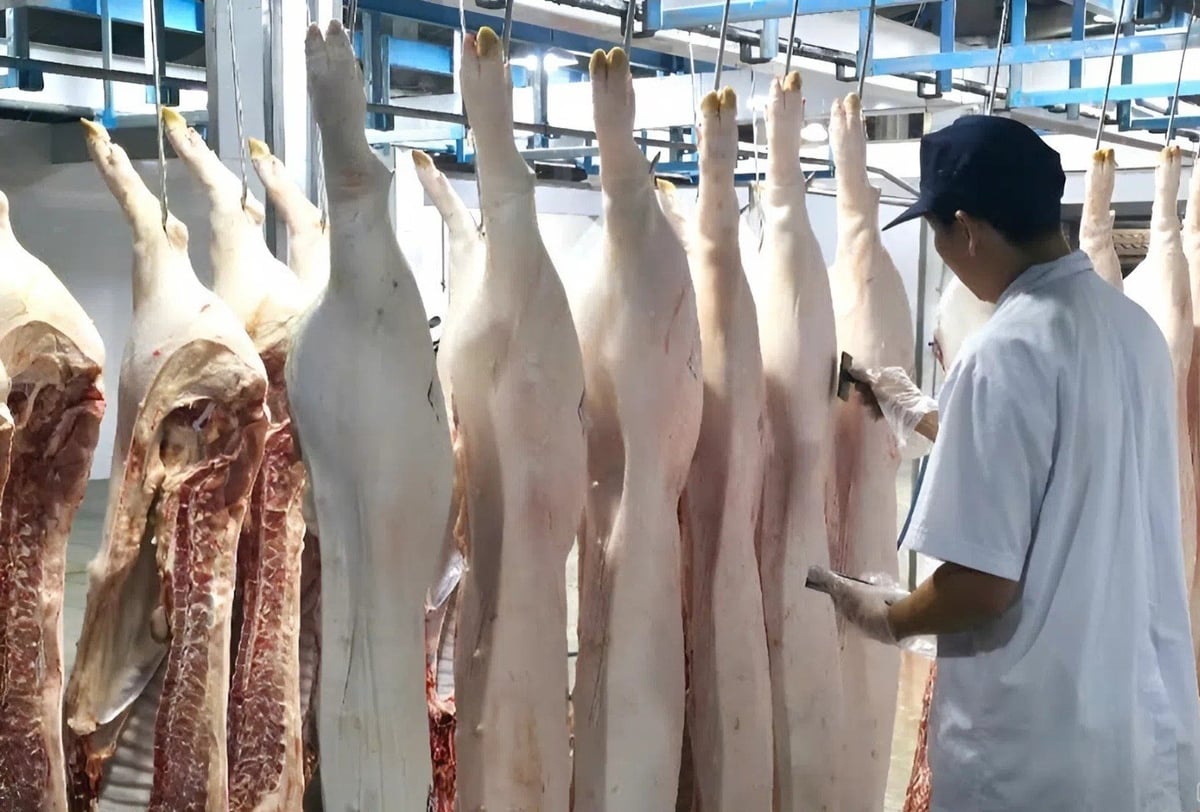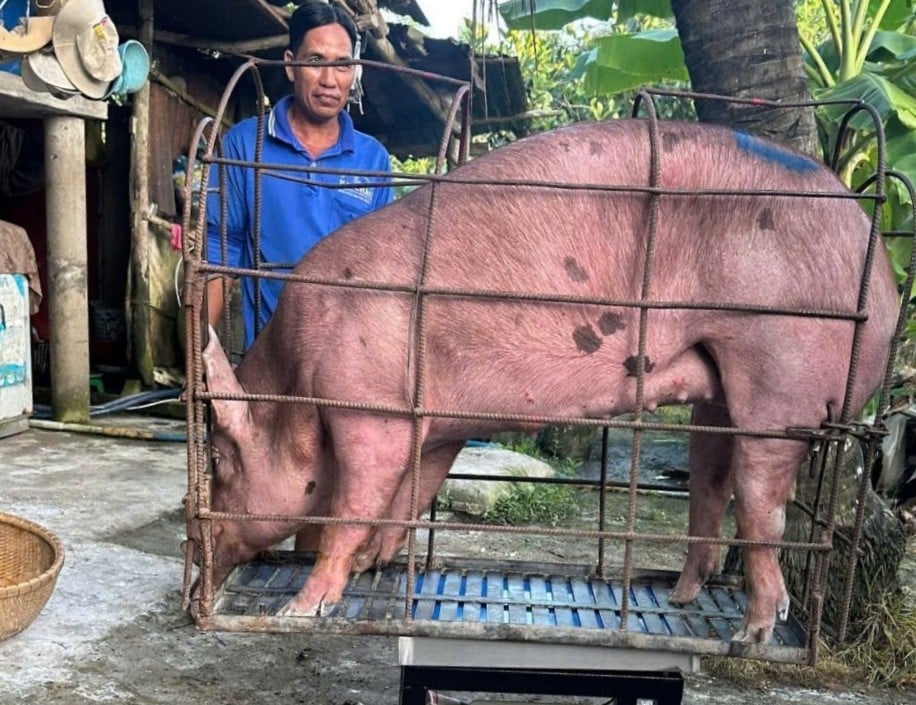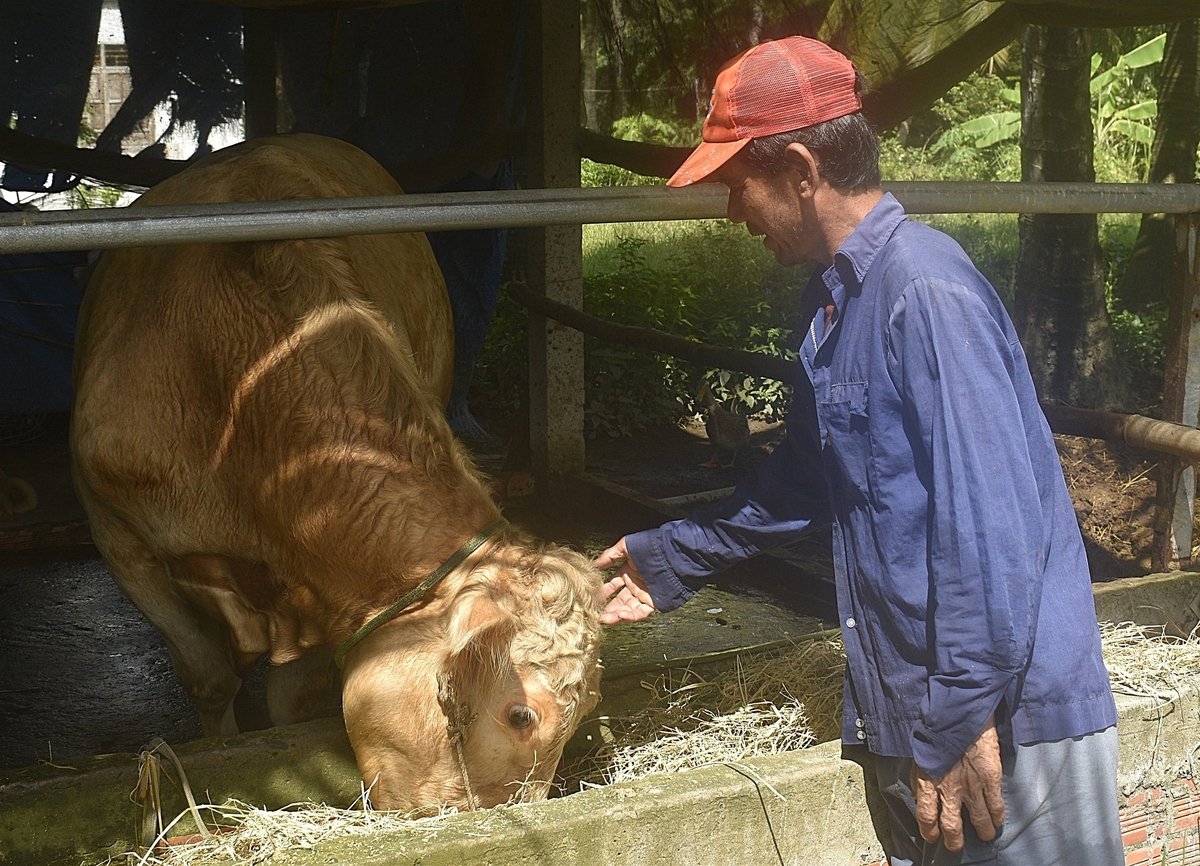October 24, 2025 | 13:29 GMT +7
October 24, 2025 | 13:29 GMT +7
Hotline: 0913.378.918
October 24, 2025 | 13:29 GMT +7
Hotline: 0913.378.918
Information from the Department of Livestock Production and Animal Health of Vinh Long shows that disease prevention and control work on livestock and poultry has been implemented synchronously from the beginning of the year to August 11, 2025, helping to effectively control many dangerous infectious diseases, although some new outbreaks still arise.

Vinh Long’s livestock production and animal health sector strengthens slaughter control. Photo: Minh Dam.
As of August 2025, Vinh Long province has recorded three outbreaks of African swine fever in three households, and a total of 108 pigs (equivalent to nearly 2.7 tons) were destroyed. There is also one rabies outbreak in My Thuan commune, which has been controlled and no new cases have been reported after 21 days. As for one rabies outbreak in Tra Con commune, one ownerless dog was destroyed, and the commune has reached sufficient monitoring time to declare the end of the epidemic.
Since the start of the year, Vinh Long has had one outbreak of H5N1 avian influenza (2,450 chickens destroyed), four outbreaks of African swine fever (123 pigs, weighing 3.4 tons) and six outbreaks of rabies (six dogs). Other dangerous diseases such as foot-and-mouth disease, lumpy skin disease and avian influenza have all been udner control.
The above results are achieved thanks to local veterinary forces, which have put more effort into monitoring work and issuing quarantine certificates. As of August, more than 658,000 pigs, 30,000 cattle, 16 million poultry and nearly 5,000 tons of animal products have been quarantined.
Vinh Long’s livestock production and animal health sector also pays great attention to slaughter control, with more than 500,000 pigs, 36,000 cattle and 1.6 million poultry inspected before being brought to slaughterhouses. Recent results of microbiological testing at slaughterhouses show that 34/40 samples contaminated with E. coli had been treated and disinfected as per regulations.
Regarding vaccination, the province has reached approximately 90% of the plan for avian influenza, nearly 37% for foot-and-mouth disease, and over 33% for lumpy skin disease. Vaccination against African swine fever remains a challenge due to high vaccine costs, but the number of vaccinations has increased by nearly 1,900 heads compared to the same period last year. In addition, millions of other doses of vaccine have also been deployed for livestock and poultry in a synchronous manner.

On August 17, the price of live pigs in Vinh Long was VND 63,000/kg, resulting in a profit of over VND 10 million/ton for farmers. Photo: Minh Dam.
In the context of low beef prices, Vinh Long’s livestock production and animal health sector has provided free lumpy skin disease and rabies vaccines to farmers, helping to reduce the burden of costs. According to Dao Van Thanh, a livestock farmer in Dong Be hamlet, Tan Long Hoi commune, traders buy 100 kg of beef for only VND 18 million, while the cost of raising cows is getting higher and higher. Straw is currently VND 100,000 /cong (with one Southern cong equaling 1,000 square meters), rolling and transporting costs an additional VND 10,000 - 14,000/roll, and one cong can make 17-18 rolls.
“I raise two cows, so if there is more grass, one roll of straw can last for two days, but I still need to cut more grass to have sufficient feed. Vaccination against foot-and-mouth disease is done twice a year. The government subsidizes the medicine, so it only costs me VND 10,000 - 20,000 per dose. I used to raise four cows to save for house repairs, but capital loss forced me to sell some. I’m happy to see the price of cows go up a little bit these past few days,” he said.
Meanwhile, pig farmers like Nguyen Nhat Thong (Cai Nhum commune, Vinh Long province) are very worried about the epidemic situation, especially when it comes to African swine fever. Preparing the source of breeding pigs to re-herd in service of the Lunar New Year market, his family is taking care of six sows, including some that have been mated. "To ensure the safety of the pigs, before mating, we fully vaccinate them and limit people from entering and leaving the pig farm," he said.

Dao Van Thanh feels immense joy as the price of live cattle is increasing. Photo: Minh Dam.
Le Van Dong, Deputy Director of Vinh Long Department of Livestock Production and Animal Health, said: “Starting from September, the province will carry out the second vaccination campaign against avian influenza, foot-and-mouth disease, and lumpy skin disease, while continuing to promote African swine fever vaccination through socialization.”
Vinh Long will also organize the second phase of the “Month of general cleaning, disinfection, and environmental decontamination” (the old Vinh Long area will carry out the third phase), and increase surprise inspections of compliance with the law on quarantine, slaughter, and food safety of livestock facilities and slaughterhouses.
Translated by Samuel Pham

(VAN) U.N. Secretary-General Antonio Guterres urged countries on Wednesday to implement disaster warning systems to protect people against extreme weather, saying no country was safe from the effects of global warming.

(VAN) It is necessary to establish a straw purchasing market for farmers instead of passively controlling, thereby taking proactive measures to protect air quality.

(VAN) The ALiSEA Alliance continues to support initiatives proving farmers can be central innovators in the agroecological transition.

(VAN) Dr. Cao Duc Phat emphasizes that successful transition requires integrated irrigation, resource mobilization, and placing farmers and businesses at the center.

(VAN) The 2025 'For a Green Viet Nam' program helps educate, promote environmental protection, and encourage sustainable lifestyles within the community.

(VAN) General Secretary To Lam witnessed an MoU on environment, biodiversity, and climate change signed between Viet Nam’s MAE and Finland’s Ministry of the Environment.

(VAN) Thorough risk analysis and research on water security solutions will help address challenges in the context of climate change.